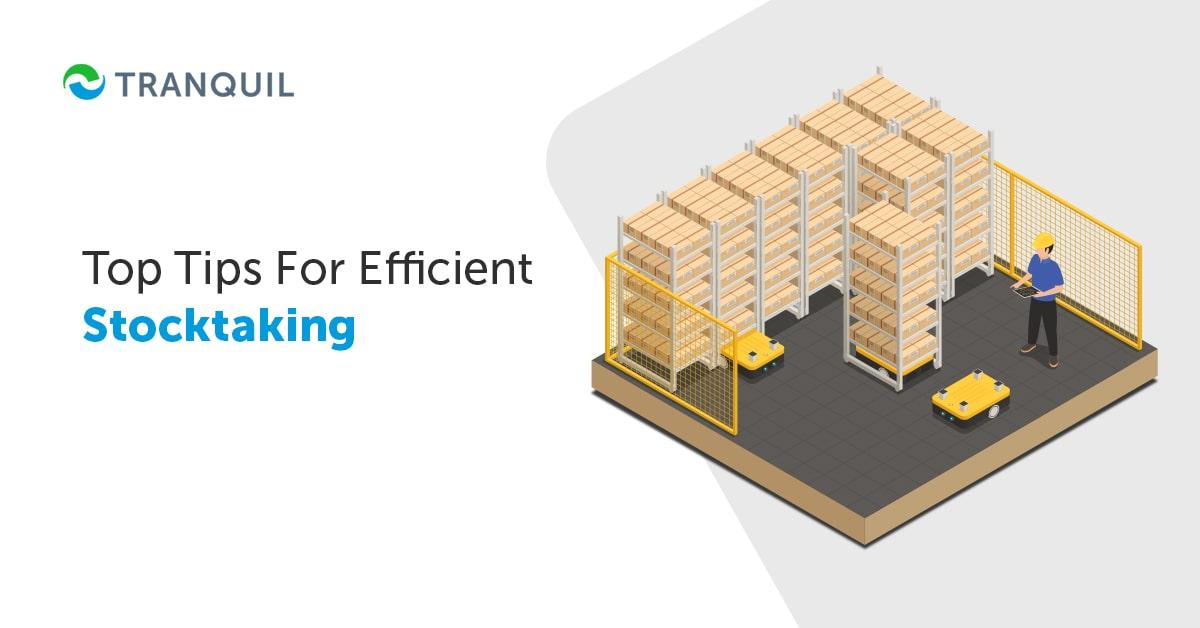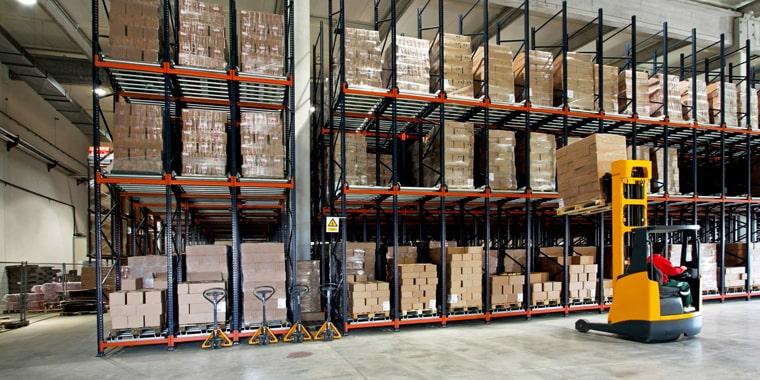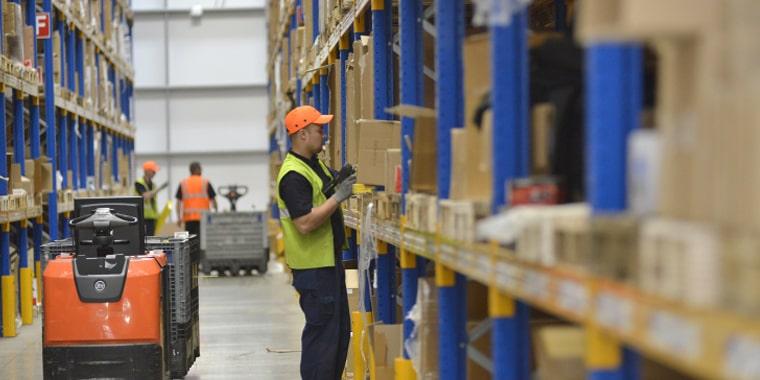
Stocktaking is simply the counting of every single product you sell and categorizing them item-wise.
For example, a textile manufacturer or trader will categorize products something like this: shirts, jeans, t-shirts, dresses, children’s clothing, etc.
Once the counting is done, the usual procedure is to verify the count by comparing it with the inventory as shown in the computer system.
It is required to be performed for the annual audit of a company or store, and often as a periodic inventory checking.
To put it in short, stock-taking generates a document which is a summary of the different inventory items with their quantities as on a particular date.
Stocktaking is pretty labor-intensive, and time-consuming too, so companies put it off as much as they can.
You need to remember that while both stock and inventory are used interchangeably, there is a difference; inventory includes everything like your raw materials, finished products, accessories, packaging, office stationery, and so on.
Stock, however, refers only to the finished products that you actually sell in your business.
ALSO READ: A Detailed Guide to Batch Tracking
In cycle counting, a specific portion of your inventory is checked on specific days, rather than taking one single count in a year of your entire stock.
This process breaks the stocktaking down to multiple small stocktaking activities.
This offers a few advantages over conventional stocktaking; the biggest one is avoiding the disruption associated with company-wide annual counting.
Therefore, cycle counting is preferred by large businesses that are unable to completely close down their operations.
It also helps to eliminate big variations in actual and system count – which happens when stocktaking happens after a long gap.
But you need to bear in mind that this is a complicated process that depends on accurate inventory systems to work properly.
Many businesses rely on a hybrid system – a mix of cycle counting and traditional stocktaking, till they are absolutely sure that moving away from the conventional system will not cause them any problems later.
ALSO READ : Job Costing – Everything You Wanted to Know About

Any business that deals in products must ensure that their stock levels are absolutely accurate every now and then as part of inventory control – in certain countries, it is part of regulatory compliance.
Here are three main reasons you must regularly check your stock:
Complete dependence on the software system for stock level accuracy is not a good idea.
Physically taking stock allows you to check the accuracy by comparing your count with the system figure.
This helps you to recognize the anomalies and resolve them before they become big problems.
If the tracking of your goods isn’t as proper as you believed. If you don’t resolve issues early, you may face problems like:
ALSO READ: How Does Landed Cost Affect the Cost of Inventory?
Robust cloud ERP like Tranquil has an efficient inventory module that helps you to track the levels and locations of your products, but you still need to perform manual checks to identify transit problems and so on.
Stocktaking helps to identify problems that the software may miss, like missing orders.
It is never a good idea to leave anything to chance when it comes to monitoring business performance.
For example, to calculate inventory turnover and other important key metrics, you need figures that are 100% accurate.
You can easily tweak your plans and procedures to enhance efficiency and boost profitability when you are sure about your inventory performance.
For instance, you could:
The importance of stocktaking and the extent of disruption caused by the activity in your business depends on the inventory system you employ.
Where the period system is followed, there is total reliance on stocktaking to have visibility regarding current levels.
Recording stock could mean closing the business for a day or two or paying staff overtime to work after hours.
Cyclic counting however can render the process less disruptive.
ALSO READ: Route and Van Sales

Any business that does stocktaking should follow certain steps. Let’s see what they are:
ALSO READ: What is Negative Inventory?
The inventory stocktake process does not end with counting everything you have.
To get the complete benefit of your work, you need to do the following:

A discrepancy is not good news, as there could be an underlying bigger problem in your inventory management, which might blow up and be disastrous if not resolved.
Also, it would mean your business is operating with false data.
The first thing to do is find out the cause of the discrepancy – it could be as simple as incorrect data entry, wrongly-placed items, or something major like theft or supply problems.
When you know the cause, you can take measures to prevent it from happening again; this may necessitate a change in processes, more security, or better software.
Once you have rectified the issue, just upload the new figure to the system.
ALSO READ: Challenges Facing Purchasing and Supply Management
Inventory is the lifeblood of any business, and you need to ensure you manage it properly.
It’s a good idea to think about how you can improve the stocktaking process first, and a few other steps to make sure you make your inventory management better on the whole.
This should be a chief consideration when selecting an inventory management system; the answer depends on your business, how complex your inventory is, do you use cycle counting, and several external factors too.
The frequency could be:
Here are some things you need to remember that could help you decide how frequently you should do stocktaking:
ALSO READ: What Are the Different Ways to Improve the Procurement Process?
We have seen that there are different types of stocktaking processes, and there is no one-size-fits-all method.
But here are some tips that may help you improve your stocktaking process.

Manual counting can cause errors, especially in larger companies.
With barcode scanning, you can decrease these risks, as they can swiftly and accurately record and store the stock levels simultaneously.
It uses a light sensor, lens, and light source to scan and view vast amounts of data in a single place.
ALSO READ: Guide on ERP in Production Planning
Smartphones are a big distraction – as are sounds from a TV or music system, PA announcements, etc.
It’s best to cut all of these out and focus on the task to ensure speed and efficiency.
A chaotic warehouse can make the going slow, causing more mistakes. Proper labeling and category-wise storage can ease things.
Staff who performed the stocktaking should be asked for suggestions in improving the process.
Manual stocktaking and using excel sheets can cause fatigue and lead to errors.
It would be a wise decision to switch to a dedicated software application that will help you achieve precision in your stocktaking process, and speed up the whole process too.
Robust inventory management software from Tranquil helps you see real-time stocks reducing dependency on stocktaking for information accuracy. In combination with barcode scanners and other tools, you can automate the process end-to-end for greater efficiency. While the system sends you alerts when the stock of a particular item is close to finishing, you can also configure it to send out purchase orders automatically to selected vendors, eliminating the need for you to constantly monitor, place orders, and so on.
Schedule a demo to see how Tranquil ERP and our Inventory Management Module can bring more efficiency into your business. Happy to answer any queries you may have.